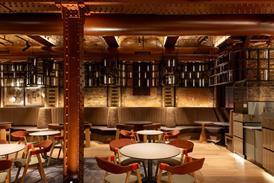Bringing Building Design’s anniversary series to a close with a bang, Patty Hopkins, co-founder of Hopkins Architects, considers the ingredients of a very special place

Wonder: Lucca, Italy
Nominator: Patty Hopkins

The approach to Lucca immediately intrigues. The massive encircling 16th-century walls and fortifications, the symbol of the independence that Lucca, alone in Tuscany, enjoyed from Florentine domination, are still complete and contain the town within, as a separate, special place.
One leaves one’s car on the edge of town and enters through one of the five great ‘Porta’ gates and uses the town on foot, as people have always done. The enclosed town is quite small, one can walk across in about 20 minutes. The summit of the walls is now a busy promenade for walkers, joggers and bicyclists, where one can get a sense of the form and scale of the city within, and its location on the surrounding plain and hills beyond.
The town is a delightful mix of narrow, medieval streets of palazzos, towers and churches leading unexpectedly to grand piazzas. I became interested in the people who had influenced the fabric of Lucca, as it is today.
Napoleon took the city in 1799 and installed his sister Eliza Baciocchi, as Principessa di Lucca. Eliza was an activist – a builder and a social reformer. In the nine years that she held power, she made enormous changes to the urban structure and institutions of Lucca. She razed a large central area of buildings to form the Ducal Palace and the grand Piazza Napoleone. She reformed all areas that affected the lives of the citizens – the law, the clergy, education, health care, agriculture and the arts, but she was never popular. She was hated by the proud Lucchese people, for forcing change on them.

Also of significant influence on the form of the Lucca that I enjoy was the architect / engineer Lorenzo Nottolini, appointed as Royal Architect to the court of Maria Luisa de Bourbon who succeeded Eliza in 1818. His great intervention in the town was to create the Piazza Anfiteatro from the ruins of the Roman Amphitheatre, incorporating the houses that had sprung up, into an eclectic whole, surrounding a new market square with four grand opposing entrances.
He also designed the stately brick Aqueduct that brought water from the Pisan Hills down into a series of beautiful marble fountains that he installed in piazzas throughout the city.
There are great buildings in Lucca – the Duomo, with the early masterpiece by Jacopo della Quercia – the tomb of Ilaria del Caretto, the Romanesque churches of San Michele and San Frediano; the Villa Guinigi and the Palazzo Manzi, now museums filled with Luccese treasures – but what is special to me is the whole of its urban fabric, which is not “preserved” – rather it still seems to suit and support the thriving community of residents and businesses.
I like to arrive early in the Piazza San Michele and sit in a café and watch the town come to life and, as so often in Italy, I get the feeling that I’m on a giant stage set. Café owners and shopkeepers are already on stage tinkering with their premises and gradually people emerge from corners and alleys on all sides and stop for a quick stand-up espresso before the “play” begins. I enjoy being part of the play!

READ THE WHOLE 50 WONDERS SERIES HERE - FROM NORMAN FOSTER TO PATTY HOPKINS
















No comments yet